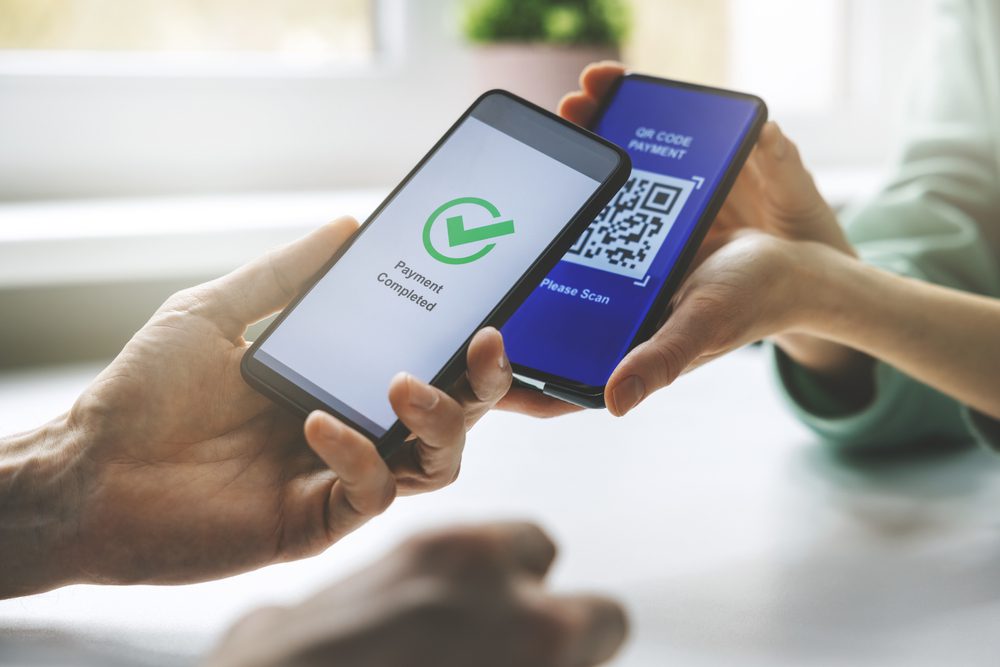The rapid adoption of QR code payments has been clear to see in recent years. As mobile phones have become more integrated into the everyday consumer experience, QR code payments have provided a smart alternative to more traditional payment methods such as cash or bank cards.
QR codes are used in many different industries to provide service information (such as a digital menu at a restaurant), facilitate payments, and improve the transaction experience for customers. However, there are still many businesses that are still yet to take the jump and adopt QR payments.
Here at Acquired.com, we’re driven to create a seamless payment journey for every one of our clients and their customers. Whether you’re a business looking to accept payment through smartphone NFC technology, traditional card payments, or are simply wanting to find out more about the latest developments ahead of the competition, we’re here to give you the support, guidance, and insights you need.
To learn more about QR code payments and the benefits that they present to both customers and merchants, read below!
How does a QR code work?
QR codes work in a similar fashion to traditional barcodes. The QR code, which is a unique combination of black squares and dots, is encoded so that a QR reader can translate the pattern into human-readable data.
When a QR code is scanned using a smartphone, an action is triggered – most commonly a URL, which the user can then click and proceed with from there.
QR code payments work precisely in this way, giving your business a smoother transaction process with far fewer barriers.
QR codes can be generated automatically using intuitive systems. Once generated, the codes will give customers immediate access to a product or payment page, meaning they can complete a contactless payment on their own in just a few seconds.
With QR codes, you give your customers a tool that helps them to pay for their items quickly, efficiently, and in the way that best suits them; from smartphone payment options such as Apple Pay and Google Pay to Pay by Bank and more, there’s an option that appeals to every customer.
Why would you choose to offer QR code payments to your customers?
Deciding on the payment methods that you offer to your customers can be a tough process – you want to offer an option that’s beneficial to the consumer without making things more difficult for your own business, which can be a tricky line to walk without the right guidance.
The checkout process, both in person and online, can be one of the biggest roadblocks that customers face, often leading to missed sales or poor reviews.
But by making the right tweaks, you can improve this experience for consumers and remove some of the workload burden caused by payments administration from your employees too.
Here are some of the key ways in which QR code payments can benefit your business:
It’s cheaper for merchants
Every business wants to reduce costs where possible without sacrificing the quality of its service – and that’s exactly what you’ll be able to do when you’re using QR code payments and Pay by Bank transactions.
As a merchant, QR code payments help you to keep both processing and network fees at a minimum, reducing your costs and maximising the profit made on every transaction.
It’s not just the fees where you’ll save costs, either – you’ll also save on time.
Businesses that have made the transition to contactless payment methods, such as QR code payments, spend less time processing transactions and having to print off receipts. With the QR payment method functioning as a self-service option, the pressure on resources is heavily reduced.
It offers flexible payment options to customers
As we head towards a cashless society at quickening speed, there are obvious benefits for your business to keep pace. Offering customers flexible payment options isn’t simply a nice idea anymore – it’s expected.
If you, as a merchant, do not offer your customer their preferred payment method, the inconvenience may understandably lose you business.
Since the COVID-19 pandemic, there has been a huge shift in preference towards contactless payments. QR codes help you to take advantage of this principle perfectly, removing the need for a physical bill to be delivered by a member of staff, leading to fewer physical touchpoints and a more streamlined journey.
Essentially, you’ll be able to take physical purchases within stores and turn them into online payments, which are more flexible and provide customers with more control.
Which industries will benefit from QR adoption?
Of course, the relevance of a QR code payment option is massively dependent on your business model, with some industries far better suited to this option than others.
A great example of where QR codes can be used perfectly as a payment tool is in the hospitality industry, where we’re already seeing wide-scale adoption.
Several leading restaurant chains have opted for a low-touch service in their locations, with the bill generated via a QR code placed on the table. This table device is connected to the ordering system used by the waiting staff to ensure that every table is shown the correct bill.
This way, customers can pay for their meal whenever they’re ready to leave. There’s no need to wait for the attention of the server, nor do your staff need to waste time manually inputting the details into the card machine as the customers calculate and split their share – it’s automated and makes it easier than ever for the customer to pay for their meal.
Are there any drawbacks to QR payments?
In simple terms, there are very few drawbacks to using QR codes to facilitate payments and speed up the transaction process.
QR codes are safe, secure, and incredibly effective tools.
Of course, every new process requires an adoption phase and, whilst the pandemic measures have accelerated adoption for QR code payment and contactless transactions, there is still a way to go before all users feel comfortable paying in this way.
So far, it seems as though the more technology-savvy consumers have made a very smooth transition into the world of QR payments. Plus, with smartphone usage forecasted to continue its climb in the coming years, it’s an equally fair prediction that the uptake of smartphone-enabled payment methods will follow a similar path.
Still, this does not signal the end of more traditional methods and it remains advantageous for any business to give its customers a choice.
Whether it’s due to a lack of trust in the system or simply down to preference, it may be a while before we see QR codes being used as the main funnel for payments online and in stores.
But with this change feeling almost inevitable, the sooner you integrate QR payment into your transaction process, the better prepared you’ll be as adoption grows.
Integrating QR code payments with Acquired.com
Payment processing (including QR code integration) can be a considerable pain point for any business, but with Acquired.com’s expert team and consultative approach, you’re in the safest hands possible.
We’ve got a wealth of experience when it comes to creating a smart payment process to help accelerate business growth, and integrating QR code payments as a part of this. We work across different industries, and tailor our approach to work for the specific problems that our clients face, improving their overall payment strategies.
With Acquired.com, your solutions are bespoke, never one size fits all.
After a chat with our team, we’ll start putting together an approach that helps you to tackle your challenges head on, giving you a strong, robust payment process that reduces barriers to successful transactions and uses a range of technologies such as QR code payments to help grow your business.
Whether it’s QR code integration and generation, smartphone payment capabilities with Apple Pay and Google Pay, or in-depth payment monitoring through our intuitive merchant hub, we’ve got everything you need to revolutionise your payments, without the stress.
Need help getting started? Our team is just a click away – get in touch today to get your business set up with a smart payment solution.







